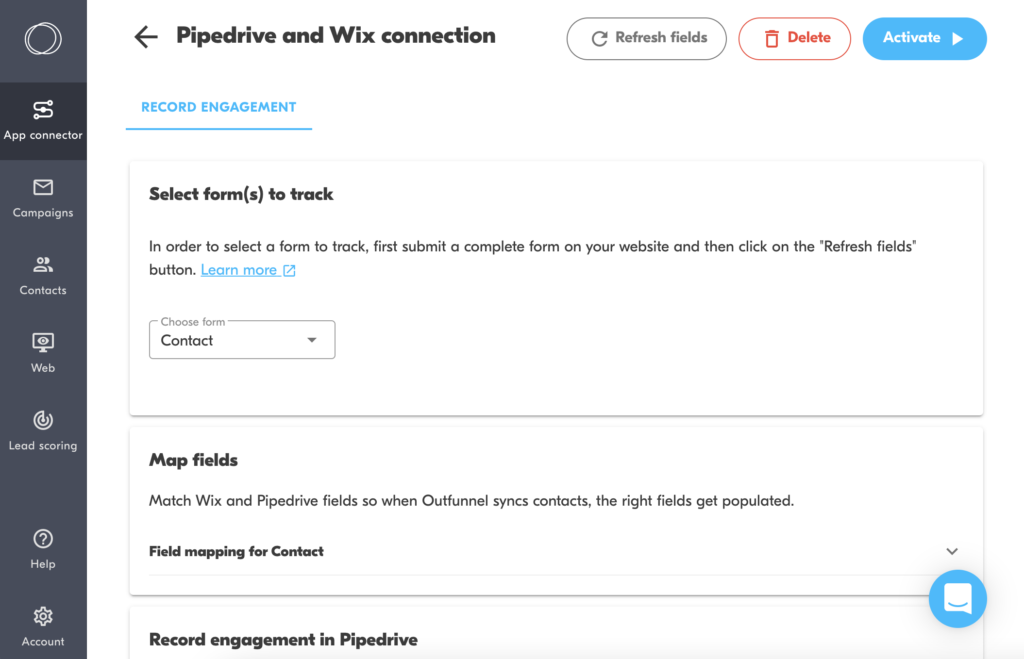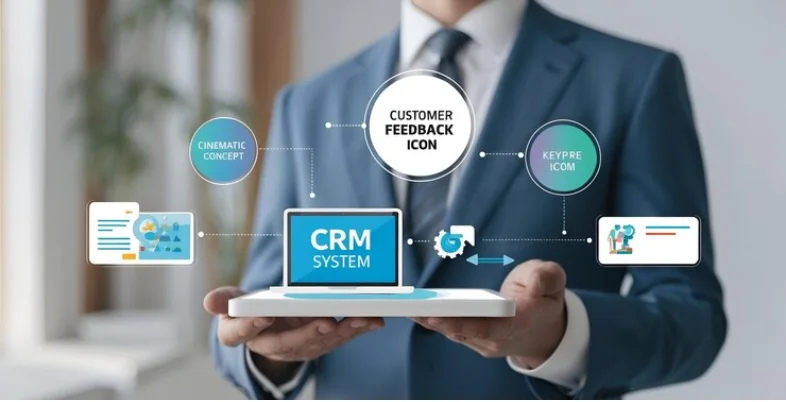
Unlocking the Power of CRM Integration with Wix: A Comprehensive Guide
In today’s digital landscape, a strong online presence is no longer a luxury, but a necessity. And for many businesses, that online hub is a Wix website. Wix offers a user-friendly platform to build and manage a website, making it accessible even to those without coding experience. But building a website is only half the battle. To truly thrive, you need to connect with your audience, nurture leads, and manage customer relationships effectively. This is where Customer Relationship Management (CRM) integration comes into play. This comprehensive guide will explore the transformative potential of CRM integration with Wix, empowering you to streamline your operations, boost sales, and foster lasting customer relationships. We’ll delve into the ‘why’ and ‘how’, providing you with actionable insights and practical steps to implement this powerful combination.
Why Integrate CRM with Your Wix Website? The Benefits Explained
Imagine your Wix website as a bustling storefront. You’re attracting visitors, showcasing your products or services, and collecting valuable data. But without a CRM system, this data can easily get lost in the shuffle. CRM integration acts as the central nervous system, connecting all the moving parts and providing a holistic view of your customer interactions. Here’s a closer look at the key benefits:
1. Centralized Customer Data
Gone are the days of scattered spreadsheets and siloed information. CRM integration consolidates all customer data – contact details, purchase history, communication logs, and more – into a single, accessible location. This unified view allows your team to understand each customer’s journey, personalize interactions, and provide better service. With a centralized system, you’ll have a 360-degree view of your customers.
2. Enhanced Lead Management
Your Wix website is likely generating leads through contact forms, online appointments, and other interactions. CRM integration streamlines the lead management process. As leads come in, they are automatically captured, qualified, and assigned to the appropriate sales representatives. This automated process saves time, reduces the risk of missed opportunities, and ensures that no lead falls through the cracks. Think of it as a well-oiled machine that nurtures potential customers.
3. Improved Sales Efficiency
By automating repetitive tasks and providing easy access to customer information, CRM integration significantly boosts sales efficiency. Sales representatives can spend less time on administrative work and more time building relationships and closing deals. CRM systems often include sales automation features, such as email templates, automated follow-ups, and sales pipeline management, further streamlining the sales process. This means more time to focus on what matters most: closing deals.
4. Personalized Customer Experiences
With a comprehensive understanding of your customers, you can tailor your interactions to their specific needs and preferences. CRM integration enables you to personalize your website content, email marketing campaigns, and customer service interactions. This level of personalization fosters stronger customer relationships, increases customer loyalty, and ultimately drives sales. It’s about making each customer feel valued and understood.
5. Data-Driven Decision Making
CRM systems provide valuable insights into your customer behavior, sales performance, and marketing effectiveness. By analyzing this data, you can make informed decisions about your business strategies. For example, you can identify your top-performing products, optimize your marketing campaigns, and improve your customer service processes. Data is the key to unlocking growth.
6. Increased Customer Retention
Happy customers are repeat customers. CRM integration helps you build stronger relationships, personalize interactions, and provide exceptional customer service. This, in turn, increases customer loyalty and reduces churn. By proactively addressing customer needs and exceeding their expectations, you create a loyal customer base that will fuel your long-term success. Keeping your customers happy is the best business strategy.
Choosing the Right CRM for Wix: Key Considerations
The market is flooded with CRM solutions, each with its own strengths and weaknesses. Choosing the right CRM for your Wix website is crucial for maximizing the benefits of integration. Here are some key factors to consider:
1. Integration Capabilities
The most important factor is seamless integration with Wix. Look for CRM systems that offer native integrations, pre-built connectors, or robust APIs that allow you to easily connect your website with your CRM. The integration should be easy to set up and maintain, with minimal technical expertise required. Ensure that the integration supports the data you need to sync between your Wix site and your CRM.
2. Features and Functionality
Identify the features and functionalities that are essential for your business needs. Do you need lead management, sales automation, marketing automation, customer service tools, or all of the above? Choose a CRM that offers the features you need to achieve your business goals. Consider your future needs as well, and select a CRM that can scale with your business.
3. Ease of Use
A user-friendly CRM will save you time and frustration. Look for a CRM with an intuitive interface, clear documentation, and readily available support. Your team should be able to quickly learn how to use the CRM and leverage its features effectively. A complex CRM will hinder productivity and adoption.
4. Scalability
Choose a CRM that can grow with your business. As your business expands, you’ll need a CRM that can handle increasing data volumes, user numbers, and transaction volumes. Ensure that the CRM offers flexible pricing plans and can accommodate your future needs. Consider if the system will scale with you in the future.
5. Pricing
CRM systems vary significantly in price. Consider your budget and choose a CRM that offers a good value for your money. Some CRM systems offer free plans with limited features, while others offer paid plans with more advanced functionality. Compare pricing plans and features to find the best fit for your business needs. Be sure to account for all costs including setup, training, and ongoing support.
6. Customer Support
Choose a CRM provider that offers excellent customer support. You’ll need help and guidance from time to time, so make sure the provider offers responsive and helpful support channels, such as email, phone, and live chat. Check online reviews to see what other users say about the provider’s customer support. Reliable support can make all the difference when you need it most.
Popular CRM Integrations for Wix Websites
Several CRM systems seamlessly integrate with Wix, offering a range of features and functionalities. Here are some of the most popular options:
1. HubSpot CRM
HubSpot CRM is a popular choice for its user-friendly interface, comprehensive features, and free plan. It offers robust lead management, sales automation, marketing automation, and customer service tools. The Wix integration allows you to capture leads from your website forms, track website activity, and personalize your interactions. HubSpot is an excellent option for businesses of all sizes. It’s a powerful, yet accessible, CRM solution.
2. Pipedrive
Pipedrive is a sales-focused CRM that is known for its intuitive interface and visual sales pipeline management. It’s a great option for businesses that want to streamline their sales process and track their deals effectively. The Wix integration allows you to capture leads, track website activity, and automate sales tasks. Pipedrive is designed to help you close more deals.
3. Salesforce
Salesforce is a leading CRM platform that offers a wide range of features and customization options. It’s a good option for larger businesses with complex needs. The Wix integration allows you to connect your website with Salesforce, capture leads, and manage your customer data. Salesforce offers a robust and scalable platform, though it can have a steeper learning curve.
4. Zoho CRM
Zoho CRM is a comprehensive CRM solution that offers a range of features, including sales automation, marketing automation, and customer service tools. It’s a good option for businesses that want a cost-effective CRM with a wide range of capabilities. The Wix integration allows you to capture leads, track website activity, and personalize your interactions. Zoho is a strong competitor in the CRM space.
5. Agile CRM
Agile CRM is a feature-rich CRM that offers sales and marketing automation, helpdesk, and project management tools. The Wix integration allows you to manage contacts and track deals. It’s a great option for small and medium-sized businesses.
Step-by-Step Guide: Integrating CRM with Your Wix Website
The integration process will vary depending on the CRM system you choose, but here’s a general step-by-step guide to help you get started:
1. Choose Your CRM
Select the CRM system that best meets your business needs, considering the factors discussed above. Research each option thoroughly and compare their features, pricing, and integration capabilities.
2. Sign Up for a CRM Account
Create an account with your chosen CRM provider. You’ll typically need to provide your business information and choose a pricing plan.
3. Install the Wix Integration
Most CRM systems offer a Wix integration app or plugin. Install the integration from the Wix App Market or your CRM provider’s website. Follow the installation instructions provided by the CRM provider.
4. Connect Your Wix Website
Once the integration is installed, you’ll need to connect your Wix website to your CRM account. This process usually involves entering your CRM login credentials or authorizing the connection through the Wix interface. You might also need to enter an API key.
5. Configure the Integration
Customize the integration settings to match your business needs. This may involve mapping fields, defining lead capture rules, and setting up automated workflows. Determine what data will be synced and how it will be synced. This is where you shape the integration to fit your specific workflow.
6. Test the Integration
Before launching the integration, test it thoroughly to ensure that it’s working correctly. Submit a test lead through your Wix website, and verify that the data is captured and synced to your CRM. This is vital to ensure that everything functions as expected.
7. Train Your Team
Train your team on how to use the CRM and leverage the integration features. Provide clear documentation and ongoing support to ensure that everyone understands how to use the system effectively. Make sure everyone knows how to utilize the new system.
8. Monitor and Optimize
Once the integration is live, monitor its performance and make adjustments as needed. Analyze your data to identify areas for improvement and optimize your workflows. Regularly review the integration settings to ensure that they are still aligned with your business needs. Continuous improvement is key.
Maximizing the Benefits: Best Practices for CRM Integration with Wix
To get the most out of your CRM integration with Wix, consider these best practices:
1. Define Your Goals
Before you integrate your CRM with Wix, clearly define your goals. What do you want to achieve with the integration? Are you trying to improve lead generation, increase sales, or enhance customer service? Having clear goals will help you choose the right CRM and configure the integration effectively. Know what you want to achieve.
2. Segment Your Audience
Segment your audience based on their behavior, demographics, and other relevant factors. This will enable you to personalize your website content, email marketing campaigns, and customer service interactions. Segmentation enables you to target your efforts more effectively.
3. Automate Your Workflows
Use automation features to streamline your workflows and save time. Automate tasks such as lead assignment, email follow-ups, and sales pipeline management. Automation frees up your team to focus on higher-value activities.
4. Personalize Your Interactions
Use the data from your CRM to personalize your interactions with customers. Tailor your website content, email marketing campaigns, and customer service interactions to their specific needs and preferences. Personalization builds stronger customer relationships.
5. Track Your Results
Track your results to measure the effectiveness of your CRM integration. Monitor key metrics such as lead generation, sales conversions, and customer satisfaction. Use this data to optimize your strategies and improve your results. Data is your compass.
6. Integrate with Other Tools
Integrate your CRM with other tools you use, such as email marketing platforms, social media management tools, and accounting software. This will streamline your workflows and provide a more holistic view of your customer interactions. Integration is key to a unified system.
7. Keep Your Data Clean
Regularly clean your CRM data to ensure its accuracy and reliability. Remove duplicate contacts, update outdated information, and standardize your data formats. Clean data leads to better decisions.
8. Provide Ongoing Training
Provide ongoing training to your team on how to use the CRM and leverage its features. This will help them stay up-to-date with the latest features and best practices. Continuous learning is vital for success.
Troubleshooting Common CRM Integration Issues with Wix
Even with the best planning, you might encounter some issues during the integration process. Here are some common problems and how to troubleshoot them:
1. Data Synchronization Errors
Data synchronization errors can occur if there are conflicts between your Wix website and your CRM. Check your integration settings to ensure that the data fields are mapped correctly. Review your API calls and error logs for clues. Make sure the data flows smoothly.
2. Lead Capture Problems
If leads are not being captured from your Wix website, check your form settings and your CRM integration settings. Ensure that the form fields are mapped correctly to the CRM fields. Test your forms thoroughly to ensure that they are working as expected. Verify the capture process.
3. Slow Performance
If your website or CRM is running slowly after the integration, review your integration settings and optimize your data synchronization frequency. Reduce the number of API calls and optimize your data formats. Consider upgrading your hosting plan if necessary. Speed matters.
4. Integration Conflicts
If you are using multiple integrations, there may be conflicts between them. Review your integration settings and ensure that they are not conflicting with each other. You may need to adjust your workflows to accommodate the different integrations. Resolve any conflicts.
5. Technical Issues
If you encounter technical issues, contact your CRM provider’s support team or the Wix support team. They can help you troubleshoot the problem and find a solution. Don’t hesitate to ask for help.
The Future of CRM and Wix Integration
The integration of CRM with Wix is constantly evolving, with new features and functionalities being added regularly. Here are some trends to watch:
1. Enhanced Automation
Expect to see more advanced automation features, such as AI-powered lead scoring, automated customer segmentation, and personalized content recommendations. Automation will become even more sophisticated.
2. Deeper Integration
CRM systems will integrate more deeply with Wix, providing seamless data synchronization, real-time updates, and advanced reporting capabilities. Integration will become more seamless.
3. AI-Powered Insights
AI will play a larger role in CRM, providing businesses with valuable insights into their customer behavior, sales performance, and marketing effectiveness. AI will help you make smarter decisions.
4. Mobile Optimization
CRM systems will become even more mobile-friendly, allowing businesses to manage their customer relationships on the go. Mobile access will become increasingly important.
5. Increased Personalization
CRM systems will enable businesses to personalize their interactions with customers even further, providing highly tailored experiences that drive engagement and loyalty. Personalization will be the key to customer success.
Conclusion: Embrace the Power of CRM Integration with Wix
Integrating a CRM system with your Wix website is a powerful strategy for growing your business. By centralizing customer data, streamlining processes, and personalizing your interactions, you can improve lead generation, boost sales, and foster lasting customer relationships. By following the steps and best practices outlined in this guide, you can unlock the full potential of CRM integration with Wix and take your business to the next level. Don’t delay; start exploring the possibilities today and watch your business thrive!

